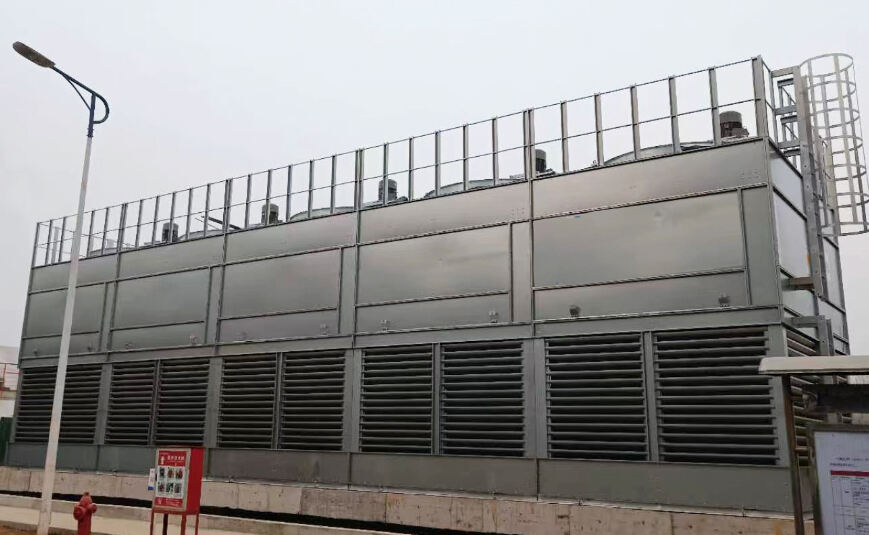Evaluating Your Drilling Requirements for Better Equipment Decisions
Selecting the most suitable mud cooling system for a drilling operation is a critical step in ensuring thermal management efficiency, operational stability, and long-term equipment protection. These systems are specifically engineered to maintain optimal drilling mud temperatures, especially in geothermal and deep-well environments where excessive heat can degrade fluid properties and damage downhole tools. An ill-suited system can lead to inefficiencies, increased downtime, and unnecessary maintenance costs.
Choosing the right mud cooling system involves more than picking a unit off a catalog. The decision must be informed by the unique thermal loads, environmental conditions, and operational parameters of the project site. From cooling capacity to system integration, each factor plays a vital role in determining whether a given setup can support continuous and safe drilling activities.
Key Operational Considerations
Thermal Load Requirements
Before selecting a mud cooling system, it is essential to estimate the thermal load based on drilling depth, formation temperature, and mud circulation rate. The system must be capable of extracting enough heat from the drilling mud to maintain fluid stability.
Thermal simulations can assist in determining the required cooling capacity. Underestimating the heat load can lead to overheating and rapid equipment wear, while oversizing the system may result in inefficiency and increased energy consumption. A well-balanced approach ensures that the system performs optimally under expected conditions.
Mud Properties and Compatibility
Drilling fluids vary significantly depending on the application and formation type. The viscosity, chemical composition, and solid content of the mud directly impact the choice of mud cooling system. Some systems are better suited for water-based muds, while others perform well with oil-based or synthetic fluids.
The selected system should be compatible with the fluid properties to prevent clogging, corrosion, or inefficiencies. Understanding how the mud behaves under pressure and temperature changes helps in identifying appropriate heat exchangers, flow channels, and material coatings.

Equipment Configuration and Design Features
Type of Heat Exchanger
The heat exchanger is the heart of the mud cooling system. Common designs include plate, shell-and-tube, and spiral types. Each has its advantages depending on available space, thermal transfer needs, and maintenance preferences.
Plate heat exchangers offer high surface area in compact designs, making them ideal for space-limited rigs. Shell-and-tube configurations are robust and suitable for high-flow scenarios. Spiral exchangers provide excellent fouling resistance and ease of cleaning. Selecting the right type ensures efficient and long-lasting thermal performance.
Pump and Flow Management Systems
Efficient fluid movement is essential for the effectiveness of any mud cooling system. Pumps must be able to handle high-temperature, abrasive fluids without frequent breakdowns. Flow management systems should support variable rates depending on operational demands.
High-quality centrifugal or positive displacement pumps are commonly used for mud circulation. Variable frequency drives (VFDs) can optimize energy consumption and flow regulation. Proper pump sizing and control integration enhance reliability and extend service life.
Environmental and Site Conditions
Climate and Ambient Temperature
The local environment has a significant influence on system performance. In hot climates, natural heat dissipation becomes more difficult, requiring more powerful or auxiliary cooling equipment such as evaporative coolers or chillers.
Conversely, in cold environments, freezing risks must be considered. The mud cooling system should include insulation, freeze protection, or heating circuits where necessary. Accounting for climate ensures consistent operation regardless of external temperature changes.
Space Constraints and Rig Layout
The physical dimensions of the system must match the space available on the rig or drilling platform. Some mud cooling systems are designed to be modular and stackable, offering flexibility in tight spaces. Others require dedicated areas with clearances for maintenance.
Before installation, site surveys should be conducted to assess routing for mud lines, electrical connections, and access paths. Choosing a system that fits the physical limitations of the site ensures seamless integration and operation.
Integration and Automation Capabilities
Compatibility with Rig Control Systems
Modern drilling rigs are increasingly automated and digitally monitored. The mud cooling system should be able to interface with rig control systems, sharing data on flow rates, temperature, and fault conditions.
This level of integration allows for real-time adjustments, reducing manual intervention and increasing response accuracy. Systems with open communication protocols are easier to incorporate into existing digital infrastructure.
Automation and Smart Monitoring
Advanced mud cooling systems come equipped with intelligent control panels, remote monitoring, and predictive diagnostics. These features allow operators to oversee system performance continuously and receive alerts about potential issues before they escalate.
Smart systems also provide data logging and trend analysis, helping in maintenance planning and system optimization. Investing in automation not only enhances operational safety but also contributes to energy efficiency and equipment longevity.
Durability and Lifecycle Factors
Material Selection for Corrosion Resistance
The longevity of a mud cooling system is closely tied to the materials used in its construction. Components exposed to hot, abrasive, or chemically aggressive fluids should be made of corrosion-resistant alloys or treated with protective coatings.
Stainless steel, duplex alloys, and ceramic-lined parts are commonly used for durability. Choosing a system built with premium materials minimizes downtime and reduces total cost of ownership over the project lifecycle.
Maintenance Access and Serviceability
Ease of maintenance should not be overlooked. Systems designed with accessible components, quick-release fittings, and modular assemblies simplify routine servicing and reduce labor costs.
A maintenance-friendly design ensures that inspections, part replacements, and cleanings can be carried out efficiently, which is especially important in remote or high-risk drilling environments.
Supplier Support and Customization Options
Availability of Technical Support
Choosing a supplier that provides strong technical support ensures that the mud cooling system is installed correctly and operates efficiently. Ongoing support includes system commissioning, training for operators, and access to spare parts.
Local service availability and fast response times are crucial in minimizing downtime. Companies that offer 24/7 assistance and remote diagnostics tools stand out as valuable partners in complex drilling operations.
Custom Design Services
No two drilling projects are exactly alike. Customization options—such as tailored heat exchanger configurations, pump capacities, and control features—enable the mud cooling system to meet site-specific demands more precisely.
Working with suppliers that offer custom engineering services ensures that the selected solution fits both technical requirements and operational goals. Custom systems often perform better and last longer than one-size-fits-all alternatives.
Budget and Total Cost of Ownership
Initial Investment vs. Long-Term Value
While upfront cost is an important consideration, long-term value should weigh more heavily in the decision-making process. A cheaper mud cooling system may incur higher maintenance and energy expenses over time, reducing its economic advantage.
Investing in a high-efficiency, durable system pays off through improved performance, lower operational costs, and fewer unexpected shutdowns. Lifecycle cost analysis can reveal the true value of different system options.
Energy Efficiency and Operating Expenses
Energy efficiency is not only an environmental concern but also a major budgetary factor. Systems equipped with energy-saving technologies like VFDs, optimized flow paths, and heat recovery mechanisms can significantly reduce power consumption.
By selecting a mud cooling system that aligns with operational and sustainability goals, operators can achieve better control over energy use and comply with industry regulations on emissions and energy consumption.
Frequently Asked Questions
What factors should be considered when selecting a mud cooling system?
Key considerations include thermal load, fluid properties, space availability, climate, and integration with existing rig systems. Materials, automation features, and maintenance accessibility also play crucial roles.
Can mud cooling systems be customized for different drilling sites?
Yes, many suppliers offer modular or fully customized systems tailored to specific drilling conditions. Customization helps improve compatibility, performance, and durability in unique site environments.
How important is automation in modern mud cooling systems?
Automation enhances safety, operational efficiency, and predictive maintenance. It reduces manual intervention and enables real-time system optimization based on drilling conditions.
What role does energy efficiency play in system selection?
Energy-efficient systems reduce operational costs and environmental impact. Features like VFDs, optimized flow controls, and intelligent temperature regulation contribute to lower power consumption.
Table of Contents
- Evaluating Your Drilling Requirements for Better Equipment Decisions
- Key Operational Considerations
- Equipment Configuration and Design Features
- Environmental and Site Conditions
- Integration and Automation Capabilities
- Durability and Lifecycle Factors
- Supplier Support and Customization Options
- Budget and Total Cost of Ownership
- Frequently Asked Questions

